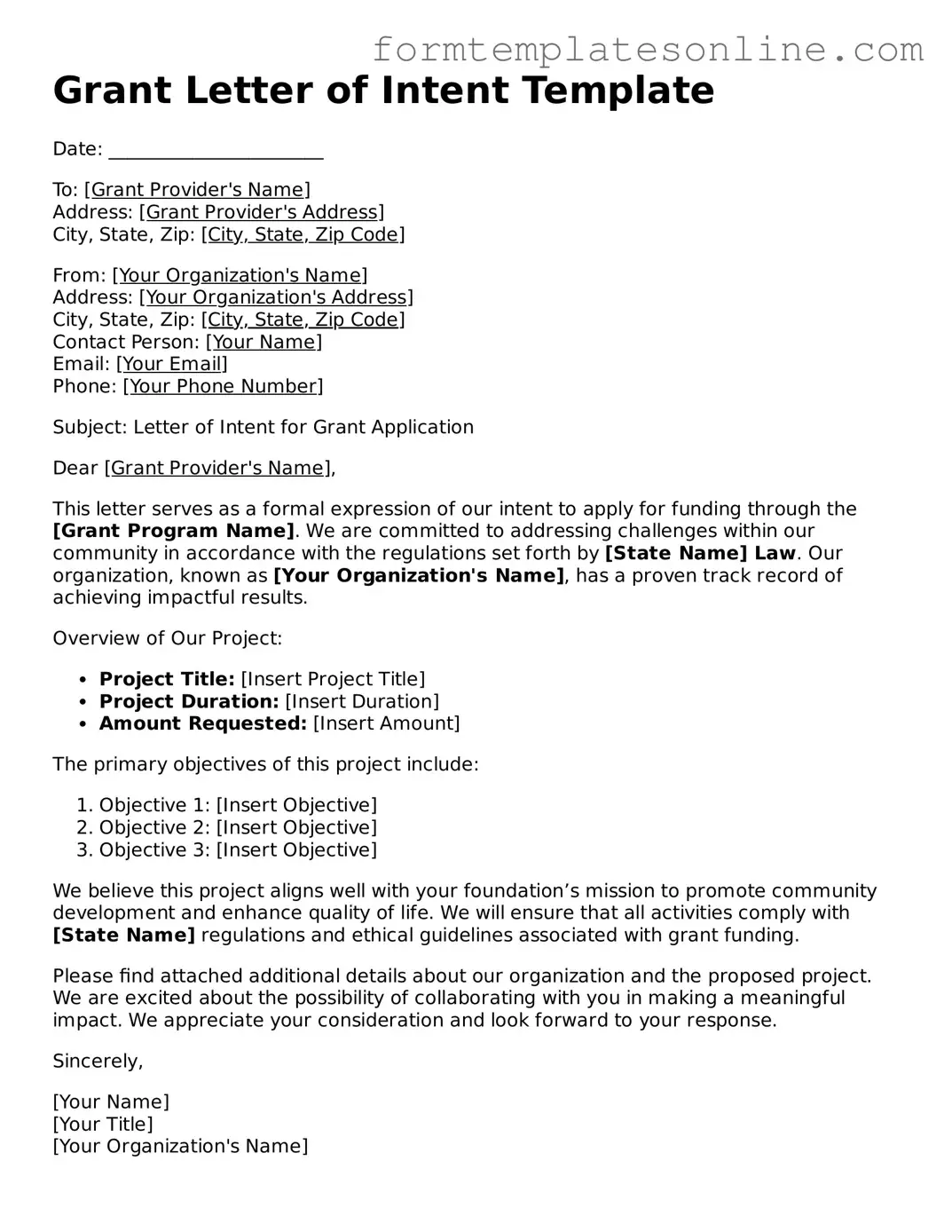What is a Grant Letter of Intent?
A Grant Letter of Intent (LOI) is a document submitted to a funding organization to express an intention to apply for a grant. It typically outlines the proposed project, its objectives, and the funding amount requested. This letter serves as a preliminary step in the grant application process, allowing funders to gauge interest and potential fit before a full proposal is developed.
Why do I need to submit a Letter of Intent?
Submitting a Letter of Intent can be beneficial for both applicants and funders. For applicants, it provides an opportunity to clarify project ideas and receive feedback before investing time in a full proposal. For funders, it helps them manage their resources by identifying potential applicants and assessing the alignment of projects with their funding priorities.
What information should be included in the LOI?
An effective LOI should include several key components: a brief introduction of your organization, a clear description of the project, its goals, the target population, and the amount of funding requested. Additionally, it may be helpful to include a timeline for the project and any relevant experience your organization has in similar initiatives.
Is there a specific format I should follow for the LOI?
While specific formatting guidelines may vary by funding organization, a standard LOI typically includes a cover page, an introduction, project description, and a conclusion. It is advisable to check the funder's website or guidelines for any specific requirements regarding length, font size, or structure.
How long should the Letter of Intent be?
The length of a Letter of Intent can vary, but it is usually concise—often one to two pages. The goal is to provide enough information to convey the essence of the project without overwhelming the reader. Clarity and brevity are key.
When is the best time to submit an LOI?
The timing for submitting a Letter of Intent largely depends on the funder's application cycle. Many organizations have specific deadlines for LOIs, which may be several weeks or months before the full proposal deadline. It is important to check the funder's website for any specific timelines and adhere to them accordingly.
Can I submit an LOI if I am unsure about my project?
Yes, submitting an LOI can be a helpful way to clarify your project idea. Even if you are unsure, providing a preliminary outline can facilitate a conversation with the funder. They may offer guidance or suggestions that can help refine your project concept.
What happens after I submit the LOI?
After submission, the funding organization will review the LOIs received. Depending on their process, they may invite you to submit a full proposal, request additional information, or provide feedback on your LOI. It is important to remain responsive and open to communication during this phase.
Are there any common mistakes to avoid in an LOI?
Common mistakes include being overly vague, failing to follow the funder's guidelines, and not clearly articulating the project's significance. Additionally, it is crucial to proofread the document for grammatical errors and ensure that the information presented is accurate and relevant.
Can I use the same LOI for different funders?
While you can use a similar template for different funders, it is advisable to customize each LOI to align with the specific interests and priorities of the funding organization. Tailoring your letter demonstrates your understanding of the funder's goals and increases the chances of a positive response.
